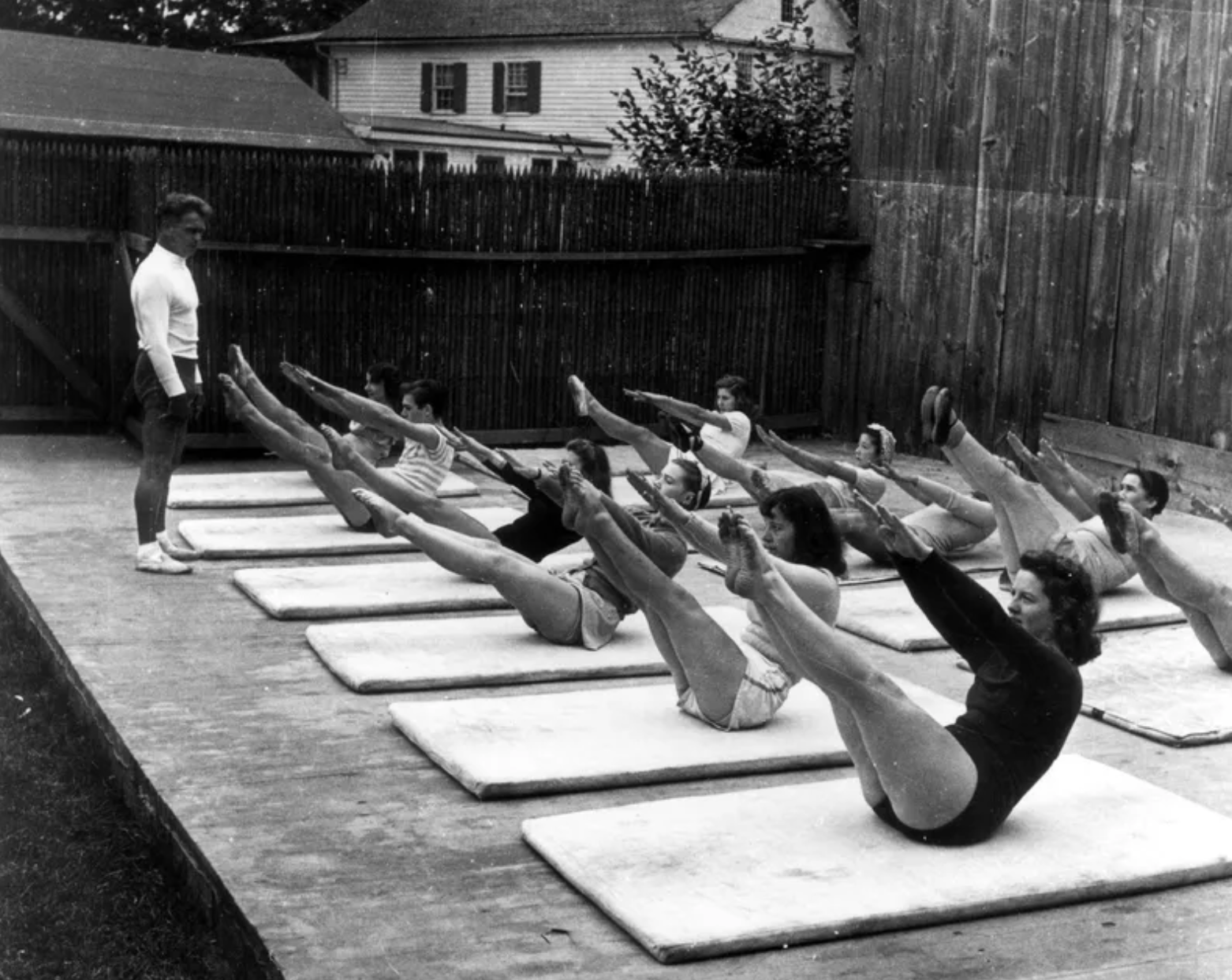What is Pilates?
Pilates has seen a significant surge in popularity recently. Did you know Pilates has been around for over 100 years? Some forms of Pilates have undergone a series of changes, alterations, and variations to the original Method - is this good or bad?
Let’s first define what Pilates is by examining the person who created the Method and the exercises he developed to work with the equipment he designed.
Joseph Pilates (1883-1967) was a boxer, gymnast, and weight trainer. His father owned a popular gym in Germany (Rincke, 2019). Joseph had a few health problems growing up and so he became obsessed with good health and how to obtain it. Through his research, he theorized that correct breathing, moving the body with control, concentration, and precision, building strength in the body, maintaining a healthy body weight, eating nutritious foods in proper portions, and getting sufficient sleep were all important (Pilates, 2012).
Picture above shows the muscular and athletic Joseph Pilates (all from his exercises on the mat and equipment), standing left, teaching a group of participants the Teaser (The Pilates Loft, n.d.)
He philosophized that if one could control their core muscles through the power of the mind and proper breathing, they could achieve integrative strength from the inside out (The Pilates Loft, n.d.). Joseph Pilates was definitely ahead of his time, as now we know how important core strength is for performance in sports and in everyday life, along with protection from low back injuries. A recent study demonstrates that core strength training contributes significantly to optimal movement posture, increased lumber stability, enhanced coordination, and reduced risk of low back injuries (Zhao et al., 2024).
Joseph Pilates devised a specific series of exercises and training techniques, while engineering all his own equipment with very detailed specifications for his methods (Wikipedia, n.d.). Joseph Pilates designed his 34 mat exercises, along with over 500 other exercises using the various pieces of equipment he created. During his prolific career he wrote several popular books and patented 26 pieces of equipment (Wikipedia, n.d.).
The reformer is the most universally known for its complete versatility to support the body while strengthening it. It has four to five springs attached to a carriage with wheels that the body lies, sits, kneels, and stands on while pulling on the straps with either hands or feet.
The tower (adapted piece of equipment from the trapeze table Joseph designed) challenges the body differently than the reformer, especially emphasizing spinal mobility with various articulation exercises. The tower reminds me of a cable machine (one of my fave pieces in a gym), but instead of cables the tower uses differing spring strengths with an amazing array of options.
Joseph created the chair for his clients to use at home when the studio was closed during the month of August every year. His version converts from an actual chair you can sit on to a piece of exercise equipment. It is the most physically challenging apparatus, often including many gymnastics-style exercises to additionally challenge core and leg strength, in support and enhancement of the exercises on the mat, reformer, and tower.
Because of Joseph’s extensive background as a trainer and inventor, the Pilates Method is most effective if we adhere closely to the original design of exercises and sequences (called “traditional” or “classical”). Sometimes I do adapt an exercise or sequence when modern science points to another more effective and safer way, as I always follow evidenced-based practices.
As mentioned in another article I wrote recently, studies have demonstrated that Pilates exercises are just as effective for increasing strength as other methods of exercise (Pinto et al., 2022). With a consistent 2-3x weekly practice, a recent study showed favourable body composition changes: increased lean muscle mass and decreased body fat (Ispas et al 2017).
Benefits of Traditional/ Classical Pilates:
Utilizing specially designed apparatus Joseph Pilates invented, the Method works by strengthening the muscular system and surrounding joints
Corrects muscular imbalances
Improves posture, coordination, balance, and flexibility
Increases lung capacity
Stimulates circulation through muscular engagement, full joint range of motion, and proper musculoskeletal alignment
Promotes new neuromuscular patterns bringing heightened body awareness
Helps prevent future injury and reduce – even in some cases alleviate – chronic pain altogether
(Chesek, n.d.)
Here at PLS I aim to present my clients with the most effective original Pilates Method, while adapting to contemporary techniques only when modern science points otherwise. The best of both worlds :)
Resources
Chesek, A. (n.d.). Why Classical Pilates? Proper Pilates Studio. Retrieved August 23, 2024, from https://www.properpilatesstudio.com/why-classical-pilates
Ispas, A.-M., Macovei, S., & Zahiu, M. (2017). Changes in the Body Composition of People Practicing Exercises on Pilates Apparatus. Ovidius University Annals, Series Physical Education & Sport/Science, Movement & Health, 17(2), 317–324.
Pinto, J. R., Santos, C. S., Souza Soares, W. J., Silveira Ramos, A. P., Scoz, R. D., Teixeira De Júdice, A. F., Alves Ferreira, L. M., Baltazar Mendes, J. J., & Amorim, C. F. (2022). Is pilates better than other exercises at increasing muscle strength? A systematic review. Heliyon, 8(11), e11564. https://doi.org/10.1016/j.heliyon.2022.e11564
Pilates, J. (2012). Pilates’ return to life through contrology—Revised edition for the 21st century (2nd ed). Presentation Dynamics.
Pilates, J. H. (2015). Your health: A corrective system of exercising that revolutionizes the entire field of physical education. Presentation Dynamics.
Rincke, E. (2019). Joseph Pilates—A Biography (2nd ed.). Inner Strength Publishing.
The Pilates Loft. (n.d.). ABOUT PILATES - CONTROLOGY. Retrieved August 22, 2024, from https://pilatesloftvt.com/about-pilates#:~:text=Joseph%20Pilates%20conceived%20“Contrology”%20during,strength%20from%20the%20inside%20out.
Wikipedia. (n.d.). Joseph Pilates. Retrieved August 22, 2024, from https://en.wikipedia.org/wiki/Joseph_Pilates
Zhao, W., Dong, H., & Cheng, H. (2024). Analysis on the effect of lumbar musculoskeletal injuries and core strength training in male weightlifters. Journal of Men’s Health, 20(7), 157. https://doi.org/10.22514/jomh.2024.120




